Thermal paste is a thermally conductive compound mostly used as an interface between a chip and a heatsink.
Its goal is to eliminate air gaps that act as thermal insulators and thus maximize heat transfer and dissipation.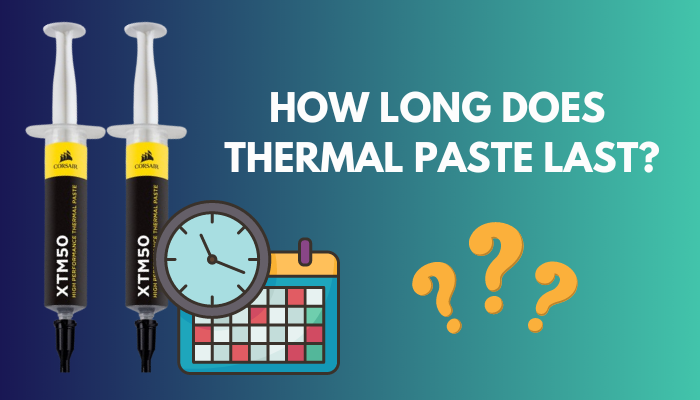
Like most other things around us, thermal paste has an expiry date too. It goes worst after using it for a long time. Normally, the manufacturers give it a lifespan of 2 to 5 years.
In this article, I will give you an authentic answer on how long a thermal paste last, along with some other thermal paste queries.
So, let us get right into it.
How Long Does Thermal Paste Last on Devices
A regular thermal paste on your CPU or GPU should last at least four to five years. This time duration can range from three to ten years, depending on the environment, the computer’s cooling system, usage, the quality of the compound and many other things.
Before taking any actions, always check your CPU and GPU temperature. If your components provide a high-temperature reading, it may be that the paste is not working as it is supposed to.
Here are the factors that affect the thermal paste life cycle:
Excessive PC Usage
If your machine runs almost all day long, its thermal paste will lose conductivity. And it results in CPU and GPU overheating.
On top of that, overclocking components and running graphically demanding games will dissipate much more heat than usual, which rapidly decreases the thermal pastes’ lifetime.
Thermal Paste Quality
When you have a lower-quality paste, it will provide a lower life cycle. It can cause you to change the paste more than usual. Always consider performance over price when getting a new thermal paste.
Dust Settlement
If your heat sink is not dissipating heat from the chip, it can be because of the dust settled on it. Dust will heat up your chip more and decrease the thermal paste’s lifetime.
Important Note: Use compressed air to clean your PC’s internal parts at least every three to five months.
Surroundings
The temperature rise will make the paste lose its efficiency. So, if your computer location’s temperature is higher, you may need to change the thermal paste quite often.
Pro Tip: You can also install a dust filter to prevent further dust accumulation.
Related contents you should read how long does an Xbox One last?
How Longer Does Thermal Paste Last on Tube
The thermal paste still on the tube lasts around 1-2 years. Besides, you can also use old thermal paste. It probably still works fine if it’s not dried out and stored properly. Though, I do not recommend keeping or stocking old thermal paste for future use as it’s easy to buy another one.
While it lasts around 1-2 years, it can also last for a couple of more years as it depends on a lot of factors. Keeping it in a cool area is better, but not inside a fridge or a freezer.
In short, just avoid places that tend to get hot so it would not dry as quickly. You also have to make sure that the cap is tightly closed to keep the air out of the tube and avoid dryness.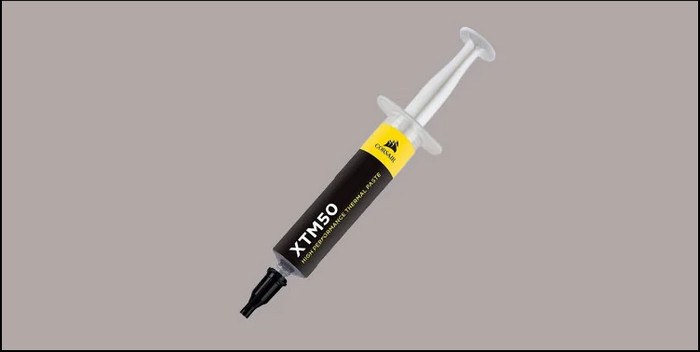
The mixtures or compounds used by the company or brand also matter.
Some last longer because each brand has a different formula for creating its own version of thermal paste. You will notice that thermal paste all have different Watts per meter-Kelvin measurements. This is often referred to as w/mK, and it measures the rate of heat transfer to any material.
With all these variables, it is hard to say how long a thermal paste could last in a tube, but it generally floats around a year or two. This is why it is best just to buy it when you need some.
Why Should We Use Thermal Paste?
Thermal paste prevents your computer’s central processing unit from overheating. It can also be called compound paste, conductive grease, thermal grease or conductive paste. It is made with a polymerizable liquid matrix and some electrically insulating conductive filters.
Mainly the thermal paste is used as an interface between a chip and a heatsink to reduce the air gap and maximize heat transfer and dissipation.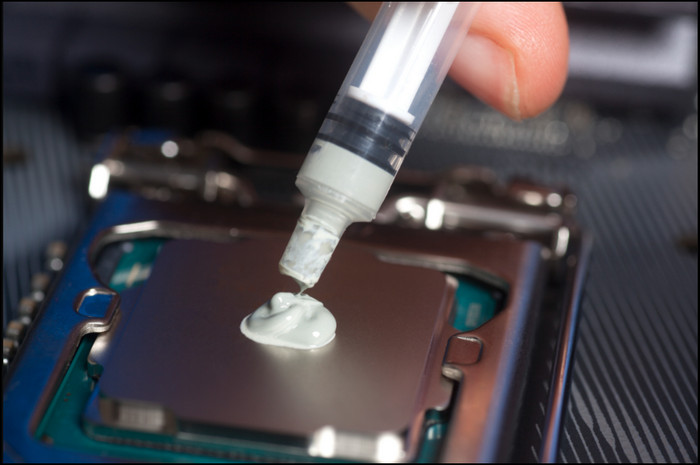
Then it can boost the connectivity and connection between the heatsink and the CPU. Unless you add thermal paste, your PC will overheat and can be damaged.
I remember one of my friends had a computer that was overheating and rebooting or shutting off frequently. He tried so many adjustments, but nothing worked out.
So, I recommend applying the thermal paste on his rig again. And the most surprising part is that it solved his issue.
Though, it doesn’t mean that the more thermal paste you apply, the longer time it lasts. Always remember that Excessive paste on a chip may last less and damage your processor.
Check out the easiest way to know about how long does startup repair take in Windows 7.
When Should You Apply Thermal Paste?
When you find your computer is not performing efficiently or if your CPU and GPU temperature rises more than normal, it is high time to re-apply thermal paste.
However, the dust settled on heatsink fans can also increase your CPU and GPU temperature. To ensure this isn’t the case, clean the dust off the heatsink and turn on the system.
The chip may need a fresh thermal paste if it still gives higher temperature reading.
If, for any reason, you have removed the heat sink from the chip, either GPU or CPU, previously applied paste will not work. So, you need to clean the thermal paste off the chip and place a fresh thermal paste before inserting the heatsink.
How to Re-Apply Thermal Paste
When you see your CPU and GPU are heating up more than ideal, it is now time to apply thermal paste to these elements. However, you can not simply inject the paste above the previously applied paste.
You will have to go through some proper steps.
Here is how to re-apply thermal paste:
1. Remove Heatsink
Remove the heatsink by removing the screws holding it to the motherboard. Once removed, the heatsink should come out easily.
However, in rare cases, the chip and the heatsink can get stuck together because of the thermal paste itself.
If that happens, gently insert the chip back into the socket and turn on the system. Turn the system off after five to ten minutes. This will raise the paste’s temperature, allowing it to lose its grip.
After that, turn the system off and try removing the heatsink again.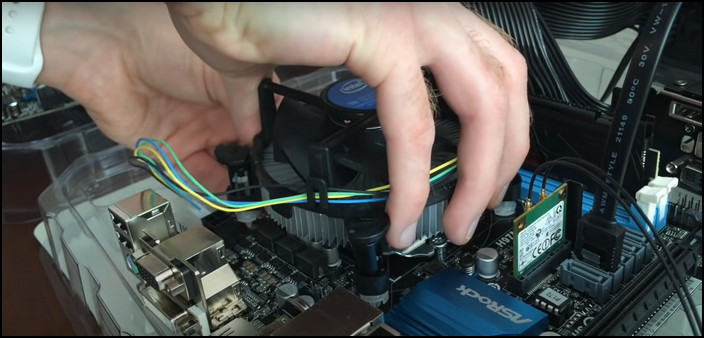
Important Note: Don’t hurry to unscrew the heatsink from the motherboard.
2. Clean Thermal Paste
You can see the rest of the previous thermal paste when you remove the heatsink from the chip. Remove all the residue using a dry paper towel or cotton swab.
Most thermal pastes are electrically non-conductive. So, some residue on the sides will not affect your PC. However, try to remove as much as possible.
If you have an electrically conductive thermal paste, you must remove every bit of previously applied thermal paste.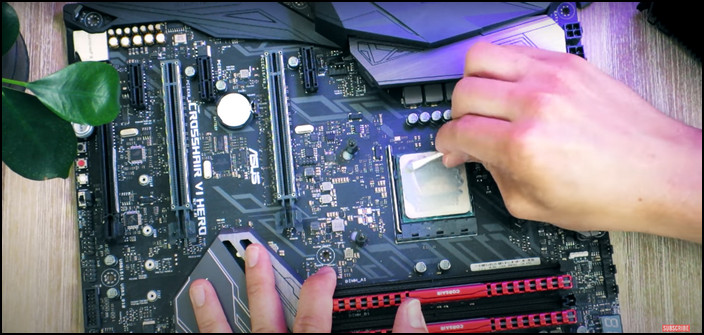
Important Note: Never use a scraping device to remove the old thermal paste. You can use isopropyl alcohol or rubbing alcohol for instant work.
3. Re-apply Thermal Paste
Now it is time to apply a new thermal paste. When applying the thermal paste, it is recommended that you use a thermal paste spreader.
Place a small amount of thermal paste on the chip and use the thermal paste spreader to spread the paste across the chip.
If you do not have a spreader, you can simply place the thermal paste on the chip in the shape of an X. This will distribute the paste across the chip when you insert the heatsink.
In my case, I have used Noctua NT H-1 and ARCTIC MX-4 thermal paste in my rig and got better heat dissipation performance. I never applied thermal paste, as my whole PC lasted all the way from 2016 to 2021 without any modifications, upgrades, or repairs.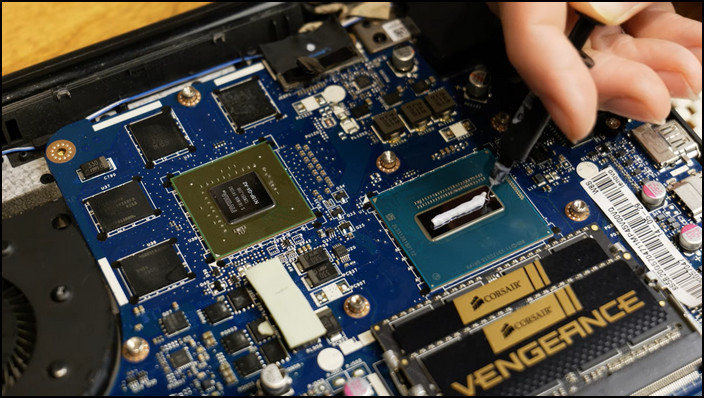
Important Note: Don’t go all in on the thermal paste, just a pea-sized droplet in the center. It will get spread automatically through cooling, the stock cooler will do it too.
4. Insert Heatsink
When you are done with all the steps, gently place the heatsink above the chip and screw it in place. Ensure that no amount of paste gets leaked from the chip’s edges.
But before that, go through our epic guide on how long is the waitlist for Starlink?
How Does Thermal Paste Work?
When you connect a heatsink to a chip, the surface is not in complete contact with one another due to its imperfections, which means there will be microscopic air bubbles in between. This will trap some amount of heat. And that’s where the thermal paste comes in.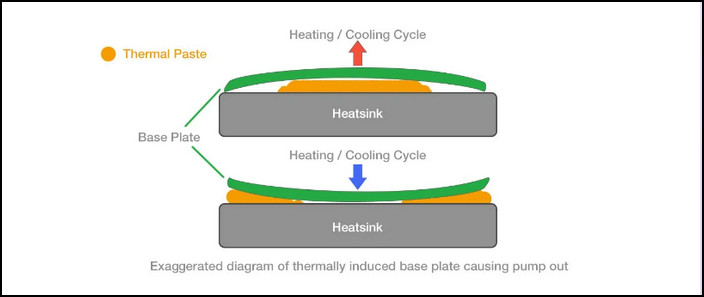
So, what the thermal paste does is, when applied on a surface, it fills those microscopic air pockets, allowing heat from the chip to transfer into the heatsink more efficiently. An adequate amount of thermal paste makes your CPU cooler.
Though thermal paste works great at transferring heat from one surface to another, more does not mean better. The more thermal paste on a surface means it can leak from the edges when two surfaces are in contact.
Also, check out our separate post on how long does an Xbox One last?
FAQs
Does thermal paste speed up PC?
Yes, the thermal paste can speed up your PC. The basic principle is simple – your CPU is overheating because your heat sink and fan cannot dissipate the heat quickly. You’ll have to do two things – clean the fan and apply new thermal paste to your CPU to improve heat transfer.
How many times does thermal paste last once applied?
A standard thermal paste will last about four-five years on your CPU or GPU.
Can I use toothpaste instead of thermal paste?
No, you can’t use toothpaste instead of thermal paste. It looks similar to thermal paste, but the toothpaste doesn’t have any cooling properties as the thermal paste.
A Final Thought
To keep the CPU and GPU cool, thermal paste is essential.
When you use your computer with dried-out thermal paste, your clock speeds will be throttled down, and there is a chance that your computer will overheat.
After reading this article, now you know that thermal paste lasts about two to seven years long, and all the queries regarding thermal paste.
Combining thermal paste with additional cooling techniques can achieve the best results.
If you have any further questions regarding this, let us know in the comment section below.



